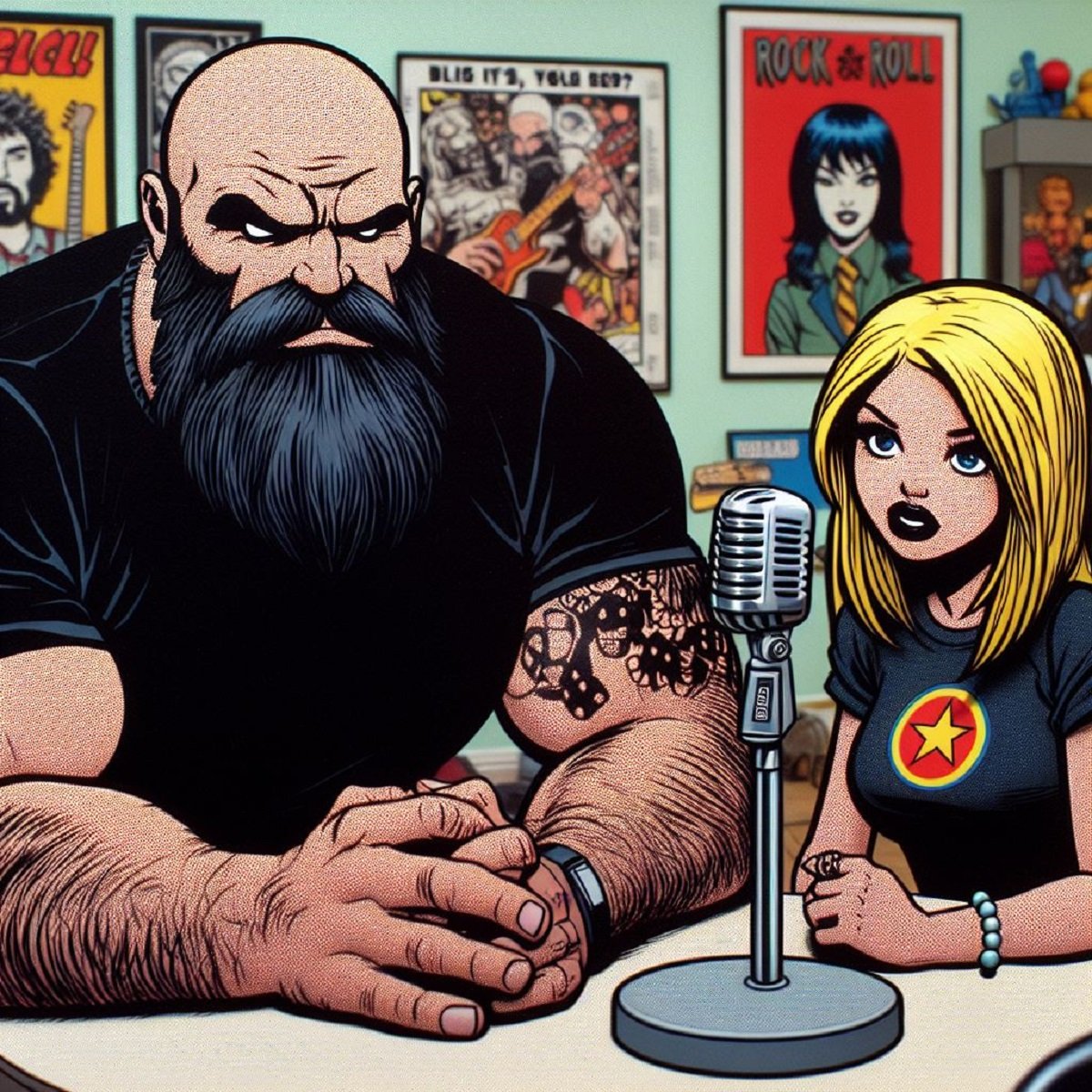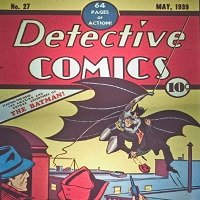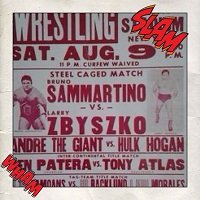Online Entertainment- When It Was Cool: Part 1: Book and Record Sets
By: John Wright (Twitter)
I remember it well. I guess it had to be around 1979. My mom and I were in one of our local appliance stores, which was owned by a friend of our family. He was actually related to us, but in one of those ways in which your parents would try to explain the relation to you, and your mind would go somewhere else in about ten seconds. Well anyway, he proudly announced that he had something new in the store that he wanted to show us. He pulled out what resembled a vinyl album jacket from behind the counter, but it was slightly larger and emblazoned with the easily recognizable poster for the movie, “Jaws.” He then explained to us that it was a laserdisc.
Wow, anything that had anything to do with lasers had to be cool. I was intrigued. He then proceeded to pull a metallic disc from the cover. The disc itself looked like it came out of a spaceship as a rainbow of colors glistened off its surface. He then placed the laserdisc into a slot in a small box sitting on a table in front of a TV. Almost magically and instantly, the opening scene of the movie began to unfold right before my eyes. I thought to myself. “Could this mean that I no longer have to consult my trusty “TV Guide” and hope that at least one of the Big 3 would offer up something worth me wasting my preadolescent time?”
That was my introduction to the wonderful world of on-demand entertainment. At least, I thought it was. However, before VHS and Betamax battles, HD-DVD versus Blue-Ray and Roku taking on Chromecast, I was immersed in my own sweet little world of on-demand entertainment without even realizing it. This series of articles will examine three of the most popular on-demand entertainment mediums of my childhood; the book and record set, the Show-n-Tell, and the View-Master.
Books and records were just what the name implied. There was a book and an accompanying record that provided narration for the book. For this reason, book and record sets were marketed to parents as well as kids because they encouraged children to read. Primarily two companies lead the way in the world of books and records. They were Peter Pan Records and Disneyland Records.
Peter Pan Records’ parent company began as Synthetics Plastic Company in 1928 and primarily sold products for the garment industry. After World War II, they wisely made a transition to creating products for vinyl recordings and changed their name to Inspired Studios. The founder, Louis Kasen, found a niche in making records with songs and stories primarily for children.
In 1960, Kasen began producing children’s records under the Peter Pan label. In the early 1970s, Peter Pan found its niche with spoken word storytelling on vinyl records. In 1971, they produced their first book and record set, an adaptation of “Peter and the Wolf.” By 1972, they secured licensing for some of the more popular children’s shows and records as they produced the first of many Flintstones titles.
While Peter Pan made many records based on popular fairy tales, their popular culture titles included Bugs Bunny, Popeye, Scooby Doo, and Casper the Friendly Ghost. The Peter Pan Book and Record sets were primarily a 7 inch 45 rpm and a 24-page book. When the record began, the listener was told that the Peter Pan storyteller would be reading the story for you but invited you to follow the identical script in the book. There would be audible cues alerting you when to turn the pages (for those kids whose reading skills were not quite up to the level of following along completely). Peter Pan also recorded some action titles to include a GI. Joe series that brought to life several toys and accessories from the popular Adventure Team series. However, Peter Pan would use a spin-off of its own label to create a niche in books and records centered on action titles.
Peter Pan “Flintstones” title with the educational value of the book and records sets being praised by Pearl S. Kolzim of the Yonkers NY Public School System (??) (from author’s collection)
Two of the four Peter Pan G.I. Joe titles. It looks like they had Joe himself telling parents all the good stuff about kids enjoying these. The Adventure Team G.I. Joe with the beard and scar is my favorite! (from author’s collection).
In 1974, Peter Pan made an effort to appeal to older children with their sub-label, Power Records with the iconic tagline: “The Action Comes Alive.” Power Records secured licensing agreements with both DC and Marvel Comics. They produced books and record sets with the most popular superheroes from both universes to include Spider Man, The Incredible Hulk, Batman, and Superman. Additionally, they produced book and record sets with stories from popular TV series to include; “Star Trek,” “Kojak,” and “The Six Million Dollar Man.” They also produced sets portraying popular action movies to include a series of four of the five “Planet of the Apes” films. They also produced a series of stories featuring the classic Universal Studio monsters to include Dracula, Frankenstein, and The Wolfman.
Two of the four Action Records’ “Planet of the Apes” titles. Note the famous “The Action Comes Alive” tag line and the $1.49 price tag (from the author’s collection)
Like Peter Pan Records, Power Records Book and Records Sets were primarily on 7” 45 rpm records; however, they also produced some 33rpm long-playing albums that were usually a compilation of stories from the same title. While the listener got more stories to listen to with the 33 rpm long-playing albums, they did not receive the book. This was unfortunate as the books in the Power Records series were written in comic book tile format and featured famous artists as Russ Heath, Dick Giardano, and John Romita Sr.
Three Action Records titles on 331/3 LP. Interestingly, the Spider Man and Six Million Dollar Man are collections of stores with no book while the monsters title is a complete story with a book (from the author’s collection)
Peter Pan Records continued to make children's’ records into the early 1990s when it started branching out into other musical genres as more abundant children’s programming became available on cable television. In 2006, the company became Inspired Studios and is still in business.
Not surprisingly, another big player in the book and record game was the Walt Disney Co. Disney’s recording label, Disneyland Records, almost started in 1954 as the company attempted to produce a recording of “The Ballad of Davy Crockett” and three audio-only episodes of its Davy Crockett television miniseries. However, Disney executives felt that they could not ramp up production of the album in time for a Christmas release and licensed the recording to Columbia Records. In 1956, Disneyland Records was officially founded with the release of its first album, “A Child’s Garden of Verses.” Disney’s entry into book and record sets was slightly before Peter Pan Records with their first Read-along Book and Record sets being produced in 1965.
Front and back of early Disneyland Records 331/3 &-inch book and record set (from the author’s collection)
Disney Read-Along Books were primarily produced on a 7” 33rpm record with a 24-page book with the text matching the script of the record. Disneyland Records also produced several 33rpm long-playing albums, which also featured a book with the text matching the record’s script. The signal for the young reader to turn the page in the first edition of the read-alongs was none other than Tinker bell’s chimes.
The first editions either featured a narrator or one of the characters from the story narrating in the first person. Two of the most famous and enduring narrators were Robie Lester and Lois “Lane” Wilkinson. The first editions, produced from 1965 to 1976, were almost entirely narrated with very little character voices, sound effects, or background music. Additionally, the first edition usually featured the story on one side of the album with the “B” side featuring accompanying songs. After 1976, the story usually continued onto the second side with the accompanying songs at the end.
Two Disneyland Records 331/3 LP titles (from the author’s collection)
The earliest Read-along Books were adaptations of popular Disney titles as well as original stories featuring well-known Disney characters. Later titles featured stories based on Disney theme park attractions and adaptations of children’s stories and fairy tales. In 1976, Disneyland Records began producing adaptations of the famous Little Golden Books series. Disney also produced Star Wars titles for their Read-Along Books even before the purchase of Lucas Films. Interestingly, many of these Star Wars titles were for a very young audience and were educational in nature. Of course, who could be better to teach your kid the alphabet than Darth Vader? Disney also produced an extensive series of Peanuts Read-alongs featuring Charlie Brown, Snoopy, and all their pals.
Like Peter Pan Records, Disney appealed to parents' buying power by touting their read-alongs as tools to help their children read. Each record was adorned with the tag line: SEE the story, HEAR the story, READ the story. Additionally, the back covers had a brief description of the educational benefits of the records, not unlike Peter Pan.
Disney stopped making read-along books on vinyl in 1987 and began producing them entirely on cassette tape. Since 2006, they have made sets with a 32-page book and an accompanying CD.
Next time, we will take a look at another excellent form of on-demand entertainment from my childhood, the Show-n-Tell.
If you found this article interesting consider becoming a Patreon supporter. That is how When It Was Cool keeps our website and podcasts online, plus you get lots of bonus content including extra and extended podcasts, articles, digital comics, ebooks, and much more. Check out our Patreon Page to see what's up!
If you don't want to use Patreon but still want to support When It Was Cool then how about a one time $5 PayPal donation? Thank you!























































